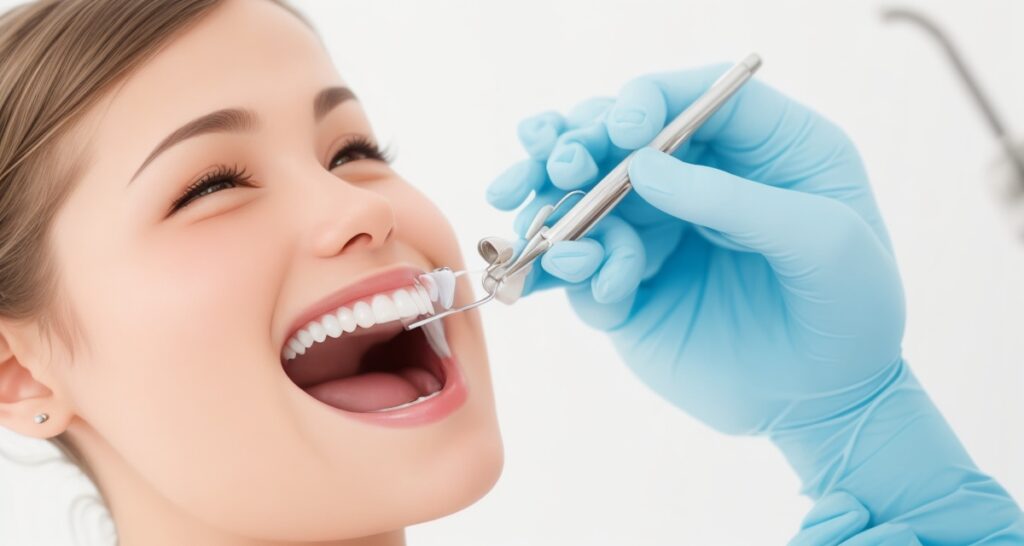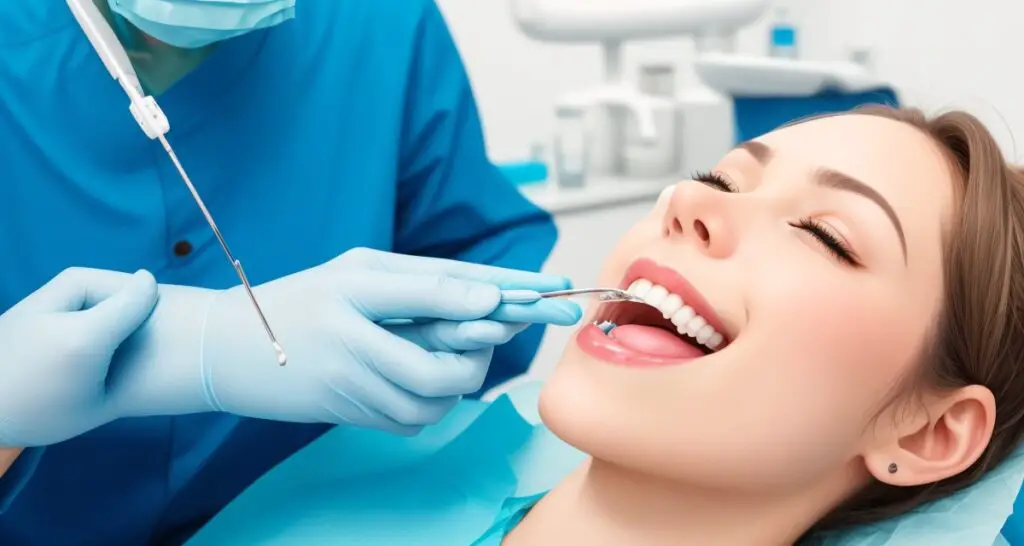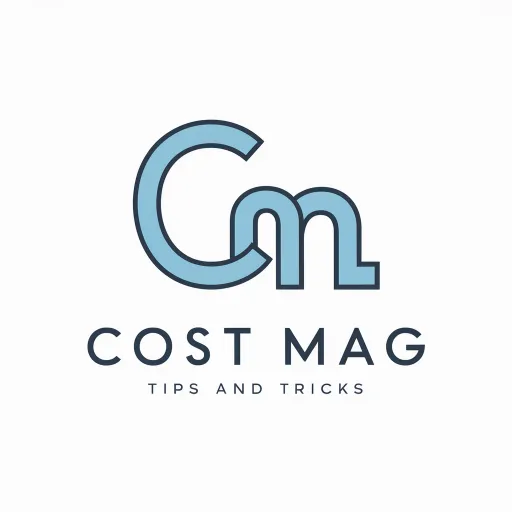Teeth filling, also known as dental filling or dental restoration, is a common dental procedure aimed at repairing and restoring a tooth that has been damaged by decay or trauma. This procedure is essential in maintaining the overall health and function of your teeth while preventing further deterioration.
When it comes to getting that dental filling, one question that often crosses people’s minds is, “How much does it cost for filling?” The cost of dental fillings can vary depending on several factors.
Dental fillings are typically performed by dentists and involve the removal of the damaged or decayed portion of a tooth, followed by the filling of the resulting cavity with a dental material. This is where the pricing factors come into play.
The primary goals of teeth filling are to restore the tooth’s integrity, prevent the spread of decay, and provide a functional and aesthetically pleasing solution. Achieving these goals often involves a discussion about the type of filling material to be used.
Reason for considering a dental filling

Dental fillings are often necessary when you have a small to medium-sized cavity. Keep in mind that the cost of dental fillings can vary depending on the extent of the restoration. The sooner your dentist identifies a cavity, the more advisable it is to proceed with treatment.
It’s crucial to understand that cavities are, in fact, bacterial infections that will persist and worsen without intervention. You might wonder about the cost of dental fillings, and it’s worth noting that the longer you delay addressing the issue, the higher the associated expenses become.
A cavity can progress to the point where it affects the nerve or causes significant structural damage, rendering filling a viable option no longer.
Dental fillings are specifically designed to address tooth decay. Common symptoms indicating the need for a filling include:
- Tooth Sensitivity
- Sensitivity to sugary foods
- Occasional sharp, sudden discomfort originating from a tooth
- Pain or discomfort when biting down
- Throbbing or persistent toothache
Investigating the Typical Expense of Tooth Fillings

The cost associated with a dental filling is contingent upon the chosen filling material. Generally, the average expenditure for a tooth filling falls within the range of $200 to $600. If you are covered by dental insurance, it’s likely that your insurance plan will provide coverage for a portion of these costs.
For larger cavities requiring more filling material, the procedure may incur a higher cost. Similarly, if you require multiple teeth to undergo cavity fillings, you can anticipate an increased expense.
It’s worth noting that the specific type of dental filling material used plays a pivotal role in determining the overall cost of the procedure. The type of tooth filling corresponds to the material utilized to replace the removed portion of the tooth. There are four primary categories of dental fillings.
Exploring Various Dental Filling Costs

If you inquire about the costs of dental fillings at your dentist’s office, they might respond with, “Which type of filling are you considering?” The material chosen for your filling has a direct impact on the cost of the procedure and how much your dental insurance might cover.
Market prices for dental filling materials can fluctuate based on supply and demand dynamics.
Fillings placed directly at your dentist’s office on the same day tend to be more budget-friendly than those that are custom-crafted in a dental laboratory. While lab-made fillings are less common, some dentists may prefer them.
It’s important to note that the size of the cavity will determine the size of the filling required, which in turn affects the overall filling cost.
Here is an overview of the cost ranges for various types of dental fillings, both with and without dental insurance:
Silver Amalgam Fillings
- Cost without insurance: $50 to $300
In most cases, silver amalgam fillings are the most economical option. For one or two surfaces, silver fillings typically cost between $50 and $150 without insurance. For three or more surfaces, the cost can range from $120 to $300 or higher. Insurance coverage for silver amalgam fillings is often more generous compared to other materials.
Silver amalgam fillings are composed of a metal amalgam or alloy, making them a long-standing choice. They are particularly useful when it’s challenging to keep a tooth dry during the procedure as no bonding is required.
It’s important to note that metal fillings involve more tooth preparation, which can be somewhat invasive. Additionally, they are silver in color, so they may be visible on teeth that show when you smile. For posterior teeth, this is usually less of a concern.
Composite Dental Filling Costs
- Cost without insurance: $90 to $450
White composite fillings are the second most common choice. For one or two surfaces, tooth-colored composite fillings generally range from $90 to $250 without insurance. For three or more surfaces, the cost can vary from $150 to $450 or more.
While composite fillings cost slightly more than silver amalgam, their prices have become more competitive in recent years. Dental insurance may not significantly affect the cost difference between white and silver fillings.
The advantage of white fillings is their ability to restore any visible tooth without the restoration being noticeable. This aesthetic benefit often justifies the slightly higher investment. Composite fillings also bond closely to the tooth, allowing for a minimally invasive restoration.
Gold Fillings
- Cost without insurance: $250 to $2,000
Gold dental fillings are typically lab-made and known as “inlays” or “onlays” or “three-quarter crowns.” These larger lab-made restorations are durable and suitable for areas with more extensive tooth decay. The cost of gold fillings can fluctuate based on market values, but they are generally more expensive than silver or composite fillings.
Porcelain Fillings Costs
- Cost without insurance: $300 to $4,500
Porcelain fillings, which are lab-made inlays or onlays similar to crowns, are distinct from white composite fillings. The additional steps involved in their creation and placement contribute to higher lab-made dental filling costs. The type of materials used, such as dense zirconia or custom-milled CEREC treatments, also influences the overall cost of the procedure.
Factors Influencing the Cost of Dental Fillings

Several factors can influence the overall cost of dental fillings, including:
Number of Teeth Requiring Fillings:
The more teeth in need of fillings, the higher your total dental expenses will be.
Location of the Affected Teeth:
Repairing cavities in back molars is typically more expensive than addressing those in front teeth, as the procedure complexity and materials required may differ.
Cavity Size:
The size of the cavity is a significant determinant of the cost. Larger cavities may necessitate more extensive filling materials and result in higher costs.
Current Oral Health:
In cases where the tooth or gums are infected, it might require multiple dental visits and treatments to resolve, incurring additional expenses.
Clinic Location and Dentist’s Pricing:
The geographical location of the dental clinic and the pricing set by the dentist can impact the cost. Smaller dental practices often have lower overhead expenses, which can translate into more cost-effective prices.
Additional Costs to Consider
In addition to dental fillings, there might be additional dental procedures required to assess your oral health or enhance the quality of dental work. These supplementary services may include:
Dental Exam: Typically costing between $39 and $126.
Panoramic X-ray: Ranging from $95 to $166.
Bitewing X-ray: With costs ranging from $37 to $140.
Periapical X-ray: Typically priced between $21 and $45.
Laughing Gas: Available at an estimated cost of $35 to $145.
Local Anesthetic: May range from $0 to $108.
Conscious Sedation: Depending on the type, costs can range from $0 to $481.
IV Sedation and Anesthesia:
Generally priced between $57 and $600.
These additional costs should be factored into your dental care budget, as they contribute to the overall expenses associated with maintaining your oral health.
Grasping Dental Filling Coverage with Insurance

Many dental insurance plans typically include coverage for dental fillings, but it’s essential to be aware of the specifics of your plan. Here’s what you should know:
Type of Filling and Coverage:
The coverage for dental fillings can vary depending on your insurance plan. Different plans may dictate the types of fillings they cover and the extent of coverage provided. Some plans may cover a certain percentage of the cost, typically around 80%, while others may have different arrangements.
Plan Selection:
The level of coverage you have depends on the plan you or your employer choose when enrolling. Each dental insurance company offers various plan options, so it’s not necessarily the case that one carrier is universally better than another.
Your plan’s details will impact what is covered and how much you’re responsible for paying.
Deductibles:
If your plan has a deductible, you’ll need to meet that amount before your insurance starts covering your dental filling. Even if your plan offers 80% coverage, you might still need to pay a significant portion of the cost, depending on your deductible.
To obtain a precise estimate of what your dental fillings will cost within your unique insurance plan, it’s advisable to work closely with your dentist. The insurance and treatment coordinator at the dental office can create a tailored care plan, incorporating your coverage details.
This will result in a detailed estimate outlining your expected expenses and financial responsibilities, ensuring transparency in your dental care costs.
If you’re looking for ways to save on dental care, dental savings plans can be an excellent option, potentially reducing dental filling costs by up to 60%. These plans offer an alternative to traditional insurance and can be a valuable cost-saving solution for many individuals and families.
Navigating Cost-Effective Choices for Dental Fillings

Are you searching for more budget-friendly ways to address your dental filling needs? Indeed, there are several accessible options to consider:
Dental Savings Plans
Dental discount plans are an excellent choice for both individuals and families aiming to reduce dental care expenses. These plans can lead to savings ranging from 10% to 60% on the average cost of dental treatments. They are available nationwide, with a vast network of over 100,000 participating dentists. You can explore whether there’s a dentist nearby who is part of the program.
Dental Schools
For high-quality yet cost-effective dental care, dental schools can be a valuable resource. At these institutions, treatment is provided by dental students who are supervised by experienced dental professors. The results are exceptional, and costs are typically lower.
Iit’s important to note that appointments at dental schools may take longer due to the need for supervision and evaluation of the students’ work.
Payment Plans
Many individuals opt for payment plans to manage the costs of dental work, especially given that dental insurance benefits haven’t always kept pace with the rising cost of living. Moreover, some people may not have dental insurance coverage.
Payment plans typically offer 0% or low-interest options with swift approval, allowing you to make manageable monthly payments for your dental filling. This enables you to receive timely treatment, even if it’s not in your immediate budget.
Timely Cavity Treatment
Addressing tooth decay at its earliest stage is not only vital for your oral health but can also be more cost-effective. The cost of a small filling today can significantly escalate if the issue is left unattended, potentially leading to more extensive and expensive treatments.
Tooth discomfort may not always be an immediate indicator of a problem, so it’s prudent to seek treatment sooner rather than later. Treating a small dental filling promptly is generally more economical than dealing with the higher costs of a root canal and crown later on.
Community Dental Clinics
Many communities host dedicated dental clinics, either on a regular basis or as pop-up events, to offer charitable dental services for those who qualify. The eligibility criteria can vary depending on the clinic.
While most of these clinics provide basic services like dental cleanings, exams, and extractions, some may also offer smaller dental fillings as part of their services.
Considering Alternatives to Dental Fillings
If you’re uncertain about the need for a dental filling, here are some alternative approaches to explore:
Seek a Second Opinion:
If you have doubts or reservations about the recommended treatment, it’s entirely reasonable to seek a second opinion from another dental professional. This can provide you with additional insights and assurance about the best course of action.
If the second dentist concurs with the initial assessment, it may reaffirm the need for treatment.
Silver Diamine Fluoride (SDF):
In specific situations where traditional fillings might not be suitable, such as for special needs patients or young children who struggle with sedation or are expected to lose their primary teeth in the near future, Silver Diamine Fluoride (SDF) can be considered. It’s important to note that SDF can cause staining, but it has the potential to halt the progression of cavities.
Monitor the Condition:
If the dental issue is small and has not breached the outer layer of enamel, your dentist might recommend a watchful approach. This may involve the prescription of a fluoride gel to enhance your oral hygiene routine. The dentist can monitor the condition during subsequent check-ups to assess whether the issue has evolved or stabilized. This approach is particularly applicable when the lesion is in its early stages.
Understanding the Dental Filling Procedure
How Much Does It Cost For Filling?
Receiving a dental filling is one of the most routine dental treatments available. If you’ve never experienced this procedure before, there’s no need for concern; it’s a straightforward process.
Here’s what you can anticipate during a dental filling procedure:
Numbing Your Tooth: Your dentist will begin by gently numbing the affected tooth. To ensure your comfort, they may apply numbing gel before administering the injection. This step ensures that you experience minimal discomfort during the procedure.
Cleaning and Removing Decay: Once your tooth is numb, the dentist will carefully remove the decayed and damaged portions of the tooth structure. This is a crucial step in halting the progression of decay and restoring the tooth’s health.
Prepping and Shaping the Tooth: After cleaning, the dentist will prepare the remaining tooth surface to receive the filling material. They will meticulously shape and condition the tooth to ensure the filling bonds effectively.
Applying the Filling Material: The next stage involves placing the filling material directly into the prepared tooth. The choice of material may vary based on your specific needs. If it’s a lab-made filling, a subsequent appointment will be scheduled.
Following the procedure, it’s important to be aware that the anesthetic will wear off within a few hours. During this time, it’s advisable to avoid chewing on anything, including your cheek or tongue, to prevent unintentional discomfort. Your dental team will provide you with guidance to ensure a smooth and comfortable recovery.
Conclusion
The cost of a dental filling varies based on several factors, including the type of filling material, the number of cavities, and the dentist’s fees. On average, a dental filling without insurance typically ranges from $200 to $600 per cavity.
Dental insurance coverage can play a significant role in offsetting these costs, although the level of coverage varies among different insurance plans. Low-cost alternatives, such as dental discount plans, dental schools, and community dental clinics, provide options for those seeking more affordable dental fillings.
Addressing dental issues promptly is financially prudent, as early treatment is less expensive and less invasive compared to delayed intervention, which can result in more complex and costly procedures.
FAQs
How much does a dental filling typically cost?
The cost of a dental filling can vary depending on several factors, including the type of filling material, the number of cavities, and the dentist’s fees. On average, a dental filling without insurance can range from $200 to $600 per cavity.
Does dental insurance cover the cost of fillings?
Most dental insurance plans provide coverage for dental fillings. However, the extent of coverage and the specific types of fillings covered can vary from one insurance plan to another. It’s advisable to review your insurance policy to understand the details of your coverage.
Are there any low-cost alternatives to traditional dental fillings?
Yes, there are some cost-effective alternatives, such as dental discount plans, dental schools, and community dental clinics, which can help reduce the expenses associated with dental fillings. These options can be particularly beneficial for individuals without insurance or those seeking more affordable solutions.
What factors can influence the cost of a dental filling?
Several factors can affect the cost of dental fillings, including the type of filling material, the number of teeth requiring fillings, the location of the affected teeth, the size of the cavity, the current state of your oral health, and the pricing set by the dentist and clinic location.
Can payment plans be used to cover the cost of dental fillings?
Yes, payment plans are a common option for individuals looking to manage the cost of dental fillings. These plans often offer low or 0% interest rates and immediate approval, allowing you to make monthly payments on the balance of your dental treatment.

